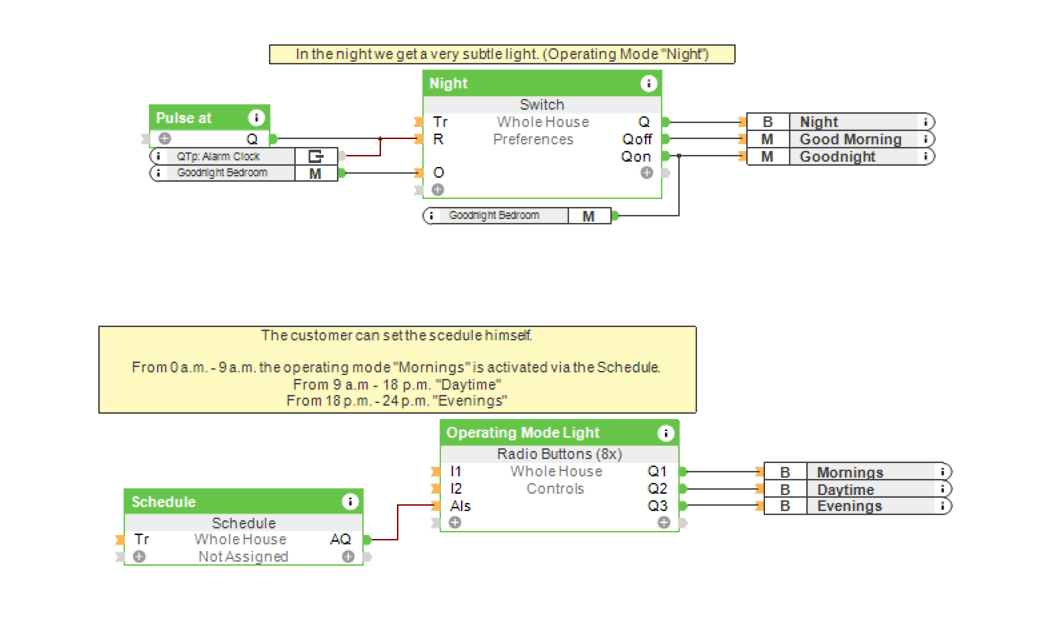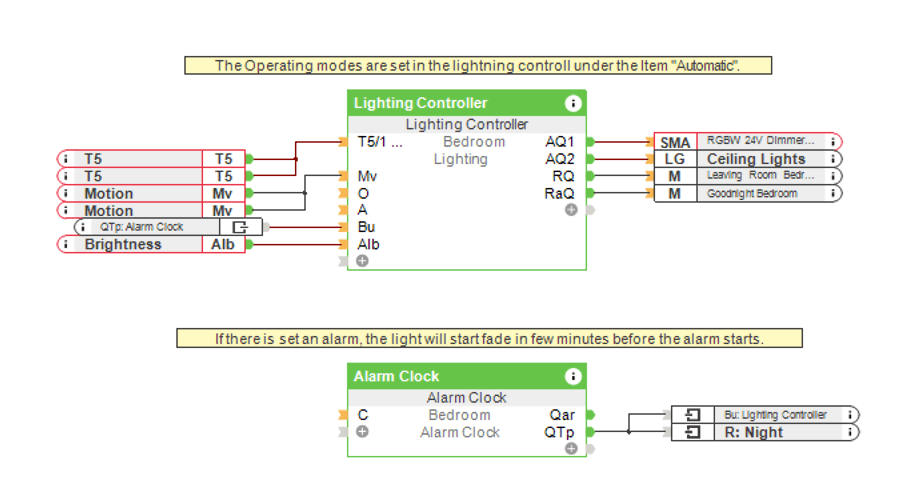Brief: I want to circadian rhythm light to help me sleep.
Light influences many aspects of our lives. Among other things, it also influences our circadian rhythm – which is an internal process that regulates the sleep-wake cycle.
To put it very simply: when it is light we feel awake, when it is dark we are tired. However, it’s not only the amount of light that is important as the colour of that light also plays a crucial role.
At dawn, there is a rather bluish light atmosphere – preparing our brain for a day full of activity. On the other hand, sunset – with it’s warm (almost orange) tones – signals the body to that it might be time to rest.
We can make use of this natural phenomenon in a Loxone project by imitating the different light conditions – creating artificial circadian rhythm light. This has positive effects on the mind, body and soul.
Solution: Using Loxone to create circadian rhythm light.
We can imitate the different natural lighting conditions within a day with different lighting scenes.
In the morning, a light scene containing a higher blue light content is used for this purpose. It prepares us for the day. In the evening we use a scene with a more of a red/orange tone. This has a rather calming effect and prepares us for an early sleep.
The positive effect can be further intensified by using different light intensities.
For example, we can wake up in the morning with a subtly blue lighting mood that slowly fades – similar to a natural sunrise. In terms of our circadian rhythm, this is the perfect start to the day.
Hardware:
Configuration:
Download the sample file:
Improve My Sleeping
Why you and your customer should consider implementing circadian rhythm light.
Light is important for us. The seasons prove this every year with the existence of disorders such as Seasonal Affective Disorder (SAD), in which people feel more depressed in the winter months. Even if we are lucky enough to not suffer with things such as SAD, we’re usually fitter, in a better mood and more concentrated as soon as the days get brighter and longer again in spring.
This makes it clear that we do not only need light to see well. Light also regulates our internal clocks – the circadian rhythm. This complicated system coordinates all bodily functions in a 24-hour cycle.
By creating artificial circadian rhythm light, we can benefit from these effects.
For example, light with a high blue concentration in the morning ensures that the production of melatonin is effectively suppressed allowing cortisol to wake us up. Evening light with more of a red/orange tint, on the other hand, promotes the production of melatonin. It makes us tired and decelerates the bodily functions in order to promote a good night’s sleep.

